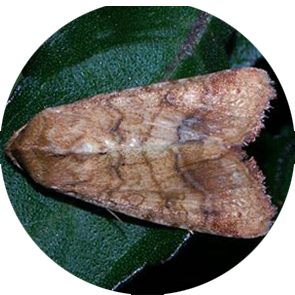


| Latin Name | Helicoverpa assulta |
| Common Name | oriental tobacco budworm |
| Biology | Adults are nocturnal and exhibit strong taxis to black light traps and sugar-vinegar solutions, laying eggs on tender leaves or buds of tobacco, chili peppers, and other plants. Larvae bore into buds and fruits, causing flower and fruit drop, with infested fruits developing holes that accelerate rotting. This pest completes 5-6 generations annually, overwintering as pupae in soil, and becomes severe during high-temperature rainy seasons. |
| Damage | This pest primarily damages Solanaceae crops (tobacco, chili peppers, tomatoes) but can also affect cotton and soybeans. |
| Distribution Regions | Asian tobacco-growing regions . |
| Monitoring | Pheromone lures mimic natural sex pheromones to attract male insects into specialized traps for population monitoring and suppression. As a core IPM component, monitoring enables early risk detection and targeted control. Mass trapping reduces mating opportunities to curb offspring populations. Protocols: ●Use only with matched traps. ●15-45 traps/hectare,replace/replenish every 4-6 weeks. ●Wear gloves or wash hands with detergent when switching lure types. ●Refer to trap-specific hanging instructions. |
| Recommended Traps | Delta Trap, Wing Trap |

ご連絡先情報をご提供ください。精密にマッチしたフェロモンソリューションをご提供します。当社の既存ポートフォリオに最適なソリューションが見つからない場合、合成化学チームが分子構造設計から量産まで一貫してカスタム開発を実施いたします。